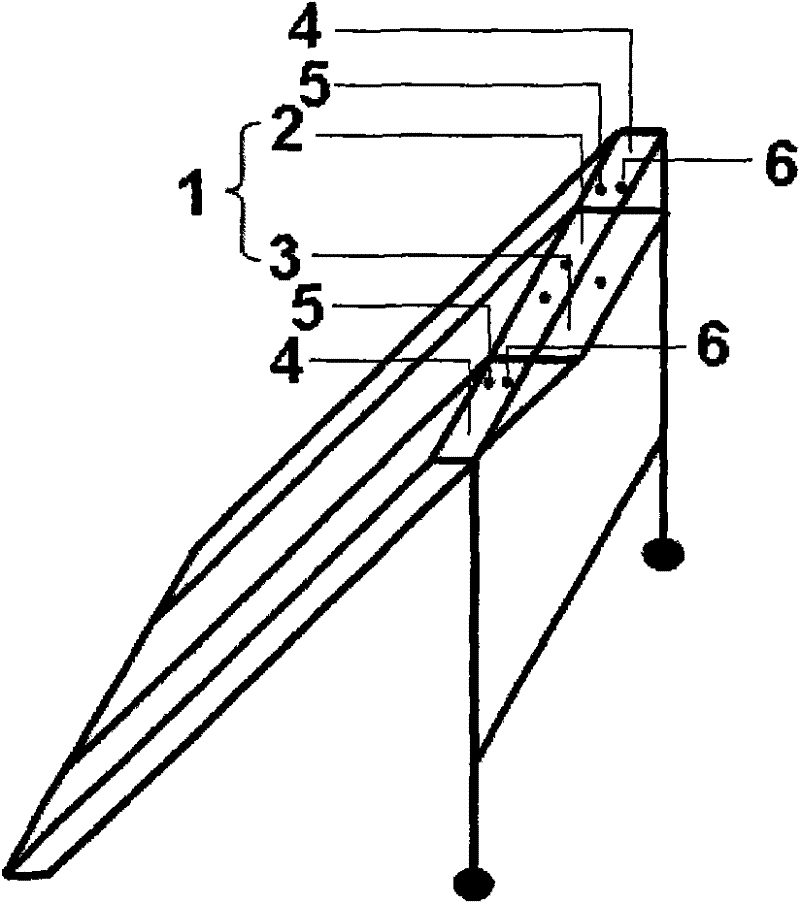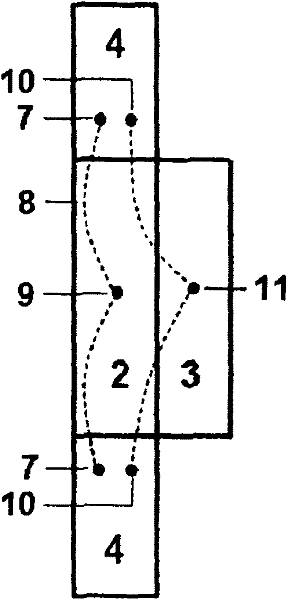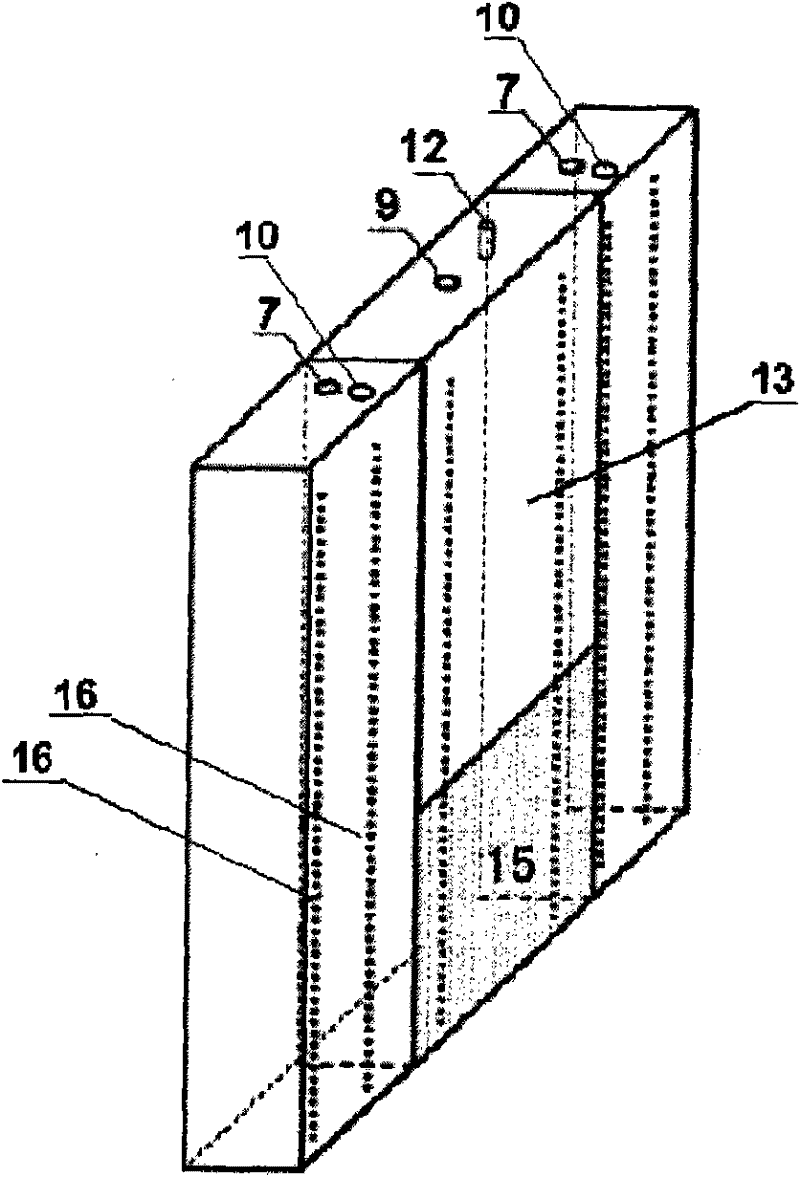Device for producing hydrogen through decomposing water
A hydrogen production device and water splitting technology, applied in the electrolysis process, electrolysis components, cells, etc., can solve the problems of low efficiency, not conducive to the full use of sunlight, and difficult separation of hydrogen and oxygen, so as to avoid reverse reactions and improve the utilization rate of solar energy , The effect of saving the cost of hydrogen production
- Summary
- Abstract
- Description
- Claims
- Application Information
AI Technical Summary
Problems solved by technology
Method used
Image
Examples
preparation Embodiment 1
[0029] Preparation Example 1 (PEC photoanode (WO 3 Preparation of film samples))
[0030] A metal tungsten sheet with a thickness of about 1mm was placed in a tube furnace (OTF-1200X, Hefei Kejing Material Technology Co., Ltd.), and burned at 810 °C for 15 minutes in an oxygen atmosphere to form a layer of thickness on its surface. WO of about 1.5 μm 3 Oxide film, take it out for use.
preparation Embodiment 2
[0031] Preparation Example 2 (PEC photoanode (carbon-doped TiO 2 Preparation of film samples))
[0032] Carbon-doped TiO using a magnetron sputtering apparatus (Beijing Chuangshi Chengna Technology Co., Ltd.) 2 Preparation of thin film samples. CO in a volume mixing ratio of 1:5:9 2 , O 2 A fluorine tin oxide (FTO) substrate was sputter-coated using a Ti target in a mixed gas atmosphere with Ar. The substrate temperature was maintained at 400°C, and sputtering was performed at a power of 300 watts for 2 hours so that the thickness of the sputtered layer was 500 nm. The sample is then removed for use.
preparation Embodiment 3
[0033] Preparation Example 3 (Preparation of Dye-Sensitized Cell)
[0034] 9cm in area 2 A layer of TiO with a thickness of 2um and a particle size of 20nm was scraped on the FTO substrate. 2particle layer. Then, the FTO substrate was immersed in an ethanol solution of N719 dye (Dalian Seven Colors Light Solar Technology Development Co., Ltd.) with a concentration of 20 mg / L, and was taken out to dry at room temperature after 24 hours. The above-treated FTO substrate was used as a photoanode. Set another area to 9cm 2 The FTO substrate was pulled in an aqueous solution of chloroplatinic acid with a concentration of 0.01 mol / L using a pulling machine (TL0.01, Shenyang Kejing Equipment Manufacturing Co., Ltd.), and then in a muffle furnace (SX-4-10 , Tianjin Test Instrument Co., Ltd.) for 2 h to form a Pt layer with a thickness of 200 nm on the FTO substrate. The FTO substrate was used as a counter electrode. The dye side of the photoanode and the Pt side of the counter el...
PUM
| Property | Measurement | Unit |
|---|---|---|
| thickness | aaaaa | aaaaa |
Abstract
Description
Claims
Application Information
 Login to View More
Login to View More - Generate Ideas
- Intellectual Property
- Life Sciences
- Materials
- Tech Scout
- Unparalleled Data Quality
- Higher Quality Content
- 60% Fewer Hallucinations
Browse by: Latest US Patents, China's latest patents, Technical Efficacy Thesaurus, Application Domain, Technology Topic, Popular Technical Reports.
© 2025 PatSnap. All rights reserved.Legal|Privacy policy|Modern Slavery Act Transparency Statement|Sitemap|About US| Contact US: help@patsnap.com



